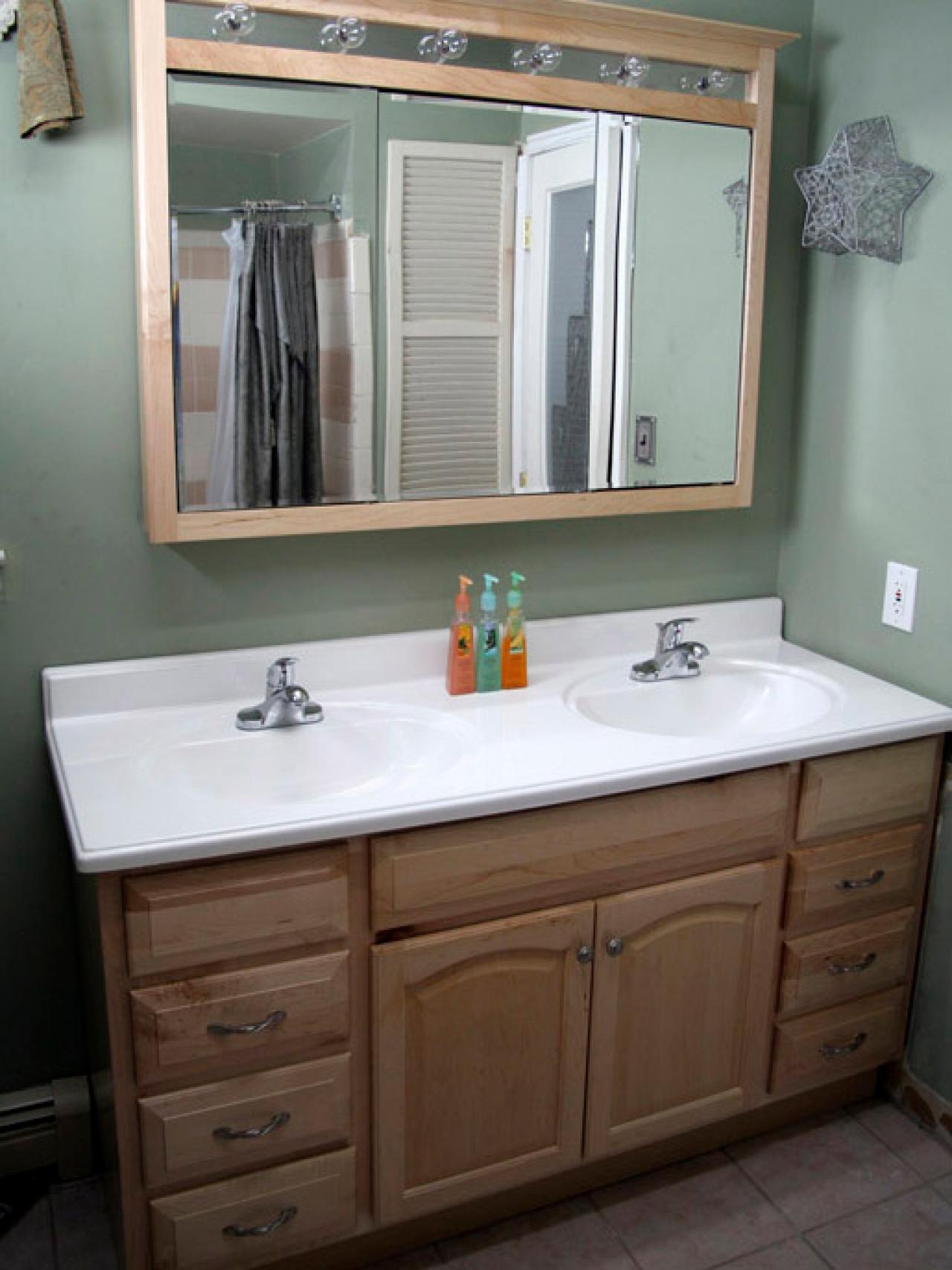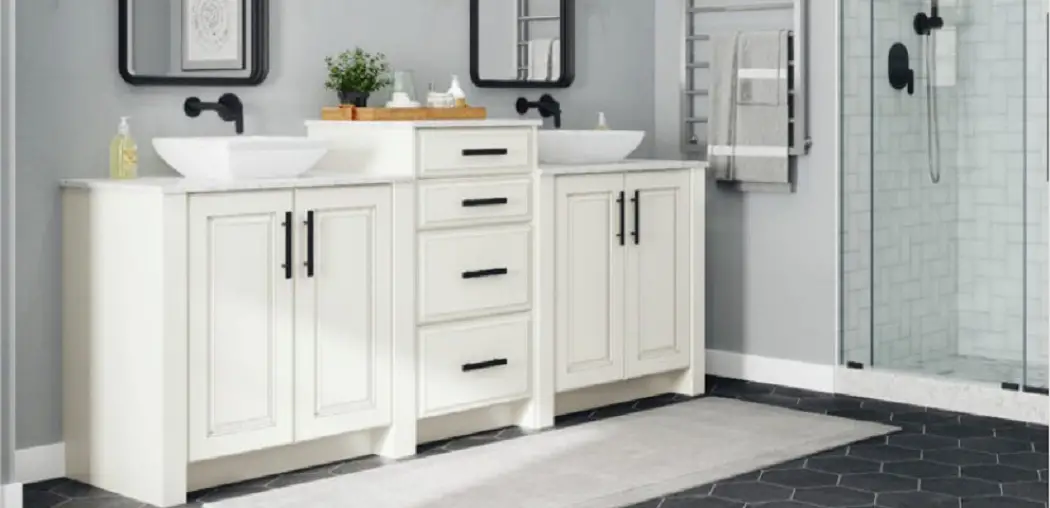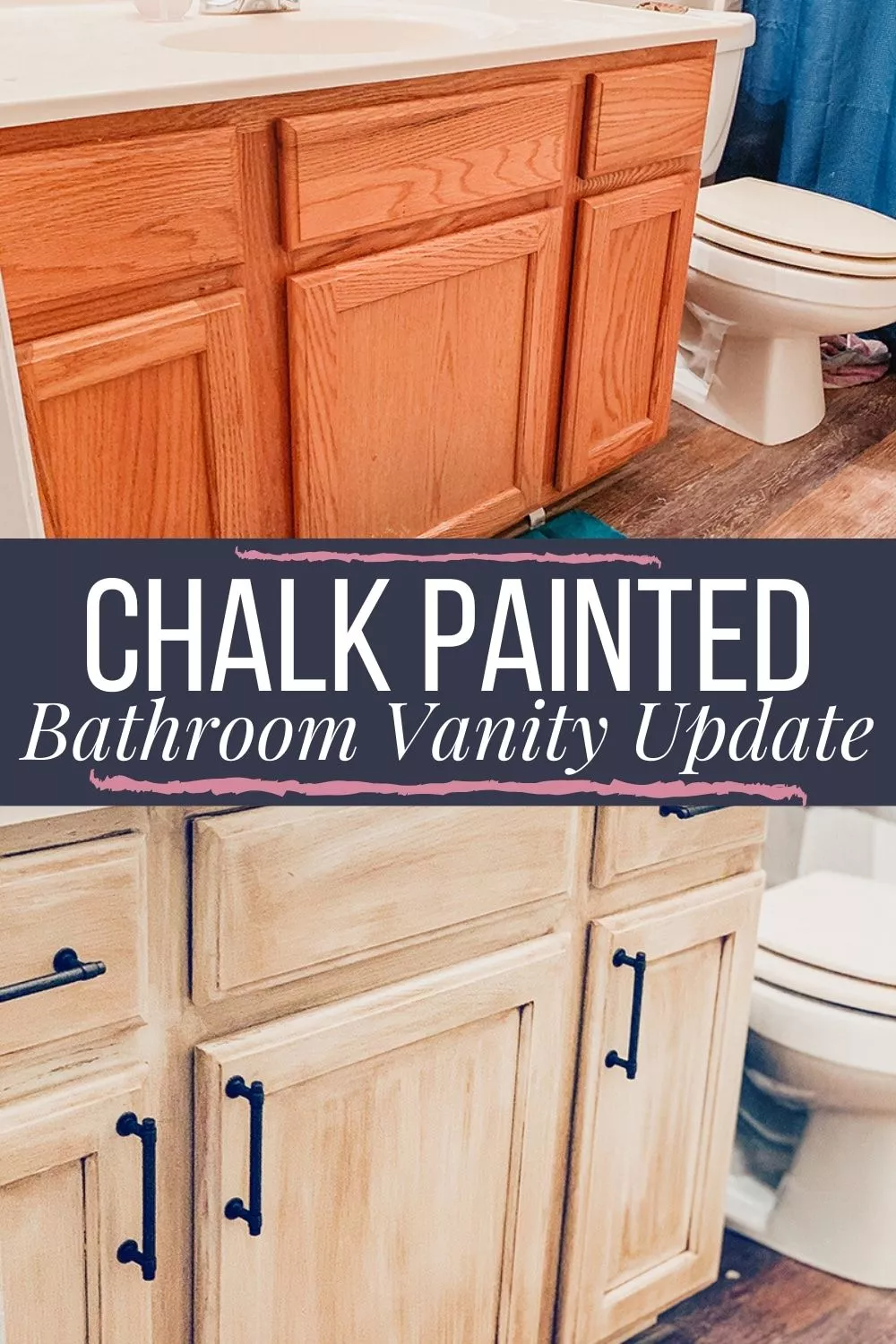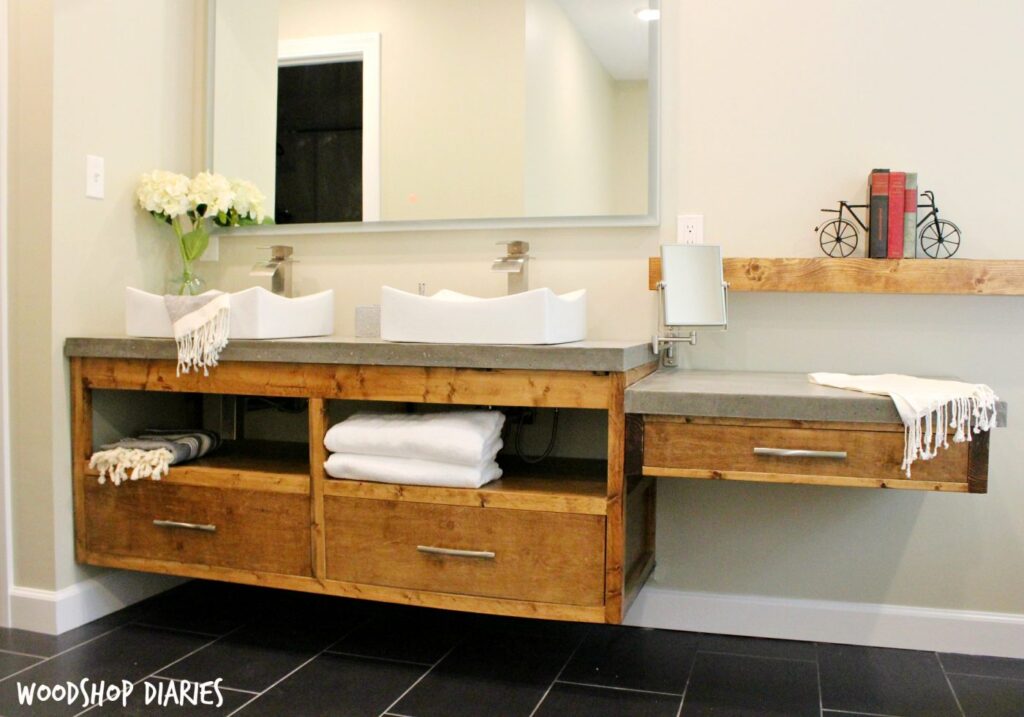Installing a bathroom vanity unit may seem like a daunting task, but with the right tools and knowledge, it can be a simple and rewarding DIY project. A bathroom vanity unit not only adds style and functionality to your space, but it also provides much-needed storage for all your bathroom essentials. Follow this step-by-step guide to learn how to install a bathroom vanity unit and transform your bathroom into a beautiful and organized oasis.How to Install a Bathroom Vanity Unit
Step 1: Measure and Prepare Before you start installing your bathroom vanity unit, it's important to measure the space where it will be placed. This will help you determine the size and style of the vanity unit that will best fit your bathroom. Once you have the measurements, make sure to clear the area and remove any existing fixtures or cabinets. Step 2: Assemble the Vanity Unit If your vanity unit comes unassembled, now is the time to put it together. Follow the manufacturer's instructions carefully to ensure proper assembly. This is also a good time to make sure all necessary parts are included and in good condition. Step 3: Install the Faucet and Drain Before placing the vanity unit in its designated spot, install the faucet and drain onto the sink. This will make it easier to connect the plumbing once the vanity unit is in place. Use plumber's putty or silicone sealant to secure the faucet and drain in place. Step 4: Attach the Vanity Unit to the Wall Using a stud finder, locate the wall studs and mark them with a pencil. Then, with the help of a friend, carefully lift the vanity unit and place it in its designated spot. Use a level to make sure it is straight and then secure it to the wall using screws and a drill. Step 5: Connect the Plumbing Now that the vanity unit is securely attached to the wall, it's time to connect the plumbing. This may involve cutting and adjusting pipes, so it's important to follow the manufacturer's instructions or seek professional help if needed. Make sure all connections are tight and secure to prevent leaks. Step 6: Install the Vanity Top If your vanity unit came with a separate vanity top, now is the time to install it. Carefully place the vanity top onto the unit, making sure it is centered and level. Use silicone sealant to secure it in place and wipe away any excess sealant. Step 7: Attach the Mirror and Drawers If your vanity unit came with a mirror or drawers, now is the time to attach them. Follow the manufacturer's instructions to ensure proper installation. Make sure all drawers and doors are aligned and functioning properly. Step 8: Add Finishing Touches Once your vanity unit is fully installed, it's time to add some finishing touches. This can include adding caulk around the edges to create a seamless look or installing new hardware for a personalized touch. Step back and admire your newly installed bathroom vanity unit!Step-by-Step Guide for Installing a Bathroom Vanity Unit
If you're feeling confident in your DIY skills, installing a bathroom vanity unit can be a satisfying and cost-effective project. Not only will you save money on installation costs, but you'll also have the satisfaction of completing the project yourself. Make sure to follow the step-by-step guide above and have all the necessary tools before starting the installation process.DIY Bathroom Vanity Unit Installation
Before you begin installing a bathroom vanity unit, make sure you have all the necessary tools on hand. These may include a drill, stud finder, level, silicone sealant, screws, and a wrench. It's also a good idea to have a friend or family member assist you with lifting and securing the vanity unit.Essential Tools for Installing a Bathroom Vanity Unit
- Measure carefully and make sure the vanity unit will fit in your space before purchasing. - Use a level to ensure the vanity unit is straight and level. - Follow the manufacturer's instructions carefully for assembly and installation. - Use silicone sealant to prevent leaks and create a seamless look. - Seek professional help if needed, especially when it comes to cutting and adjusting plumbing.Tips for a Successful Bathroom Vanity Unit Installation
- Not measuring correctly and ending up with a vanity unit that doesn't fit. - Not using a level and ending up with a crooked vanity unit. - Forgetting to attach the vanity top or mirror before securing the unit to the wall. - Not properly connecting the plumbing, resulting in leaks. - Rushing through the installation process and making mistakes.Common Mistakes to Avoid When Installing a Bathroom Vanity Unit
When it comes to choosing a bathroom vanity unit, it's important to consider the size and style of your space. Measure carefully and choose a vanity unit that fits comfortably in your bathroom without overwhelming the room. Also, consider the style and design of your bathroom and choose a vanity unit that complements it.Choosing the Right Bathroom Vanity Unit for Your Space
Floating bathroom vanity units are a popular choice for modern and minimalist bathrooms. They are attached to the wall and do not have legs, creating a sleek and streamlined look. When installing a floating vanity unit, make sure to securely attach it to the wall and follow the manufacturer's instructions carefully.Installing a Floating Bathroom Vanity Unit
When attaching a bathroom vanity unit to the wall, it's important to use screws and a drill to make sure it is securely in place. First, use a stud finder to locate the wall studs and mark them with a pencil. Then, carefully lift the vanity unit and place it in its designated spot. Use a level to make sure it is straight and then use screws to secure it to the wall through the back of the unit.How to Secure a Bathroom Vanity Unit to the Wall
Deciding whether to hire a professional or tackle a DIY bathroom vanity unit installation can be a tough decision. If you have the necessary skills and tools, a DIY installation can save you money. However, if you're not confident in your abilities or the installation requires cutting and adjusting plumbing, it's best to seek professional help to ensure a successful and safe installation. Now that you have a step-by-step guide and some tips for installing a bathroom vanity unit, you can confidently take on this DIY project and transform your bathroom into a stylish and organized space. Remember to measure carefully, use a level, and follow the manufacturer's instructions for a successful installation. With the right tools and knowledge, you can have a beautiful new bathroom vanity unit in no time!Professional vs. DIY Bathroom Vanity Unit Installation: Which is Right for You?
Why a Bathroom Vanity Unit is Essential for Your House Design

Maximizing Space and Functionality
 When it comes to designing your bathroom, one of the most important elements to consider is the vanity unit. This essential piece of furniture not only provides storage space for your toiletries and other bathroom essentials, but it also serves as a focal point for the room. By choosing the right bathroom vanity unit, you can not only enhance the overall aesthetic of your bathroom, but also maximize its functionality.
Bathroom vanity units
come in a variety of styles, sizes, and designs, making it easy to find one that fits your specific needs and preferences. Whether you have a small or large bathroom, there is a
vanity unit
that is perfect for your space. By utilizing the vertical space in your bathroom, you can create more storage and
maximize
the use of your limited space.
When it comes to designing your bathroom, one of the most important elements to consider is the vanity unit. This essential piece of furniture not only provides storage space for your toiletries and other bathroom essentials, but it also serves as a focal point for the room. By choosing the right bathroom vanity unit, you can not only enhance the overall aesthetic of your bathroom, but also maximize its functionality.
Bathroom vanity units
come in a variety of styles, sizes, and designs, making it easy to find one that fits your specific needs and preferences. Whether you have a small or large bathroom, there is a
vanity unit
that is perfect for your space. By utilizing the vertical space in your bathroom, you can create more storage and
maximize
the use of your limited space.
Adding Style and Elegance
 Aside from its practical function, a bathroom vanity unit also adds a touch of style and elegance to your bathroom design. With various materials to choose from such as wood, marble, or granite, you can easily find a
vanity unit
that complements the overall design of your bathroom. Not only does it add visual appeal, but it also adds value to your home.
Moreover, a
bathroom vanity unit
allows you to incorporate your personal style into your bathroom design. You can choose from traditional, modern, or even bespoke designs to create a unique and personalized look for your bathroom. This makes it an essential piece for those who want to create a cohesive and stylish house design.
Aside from its practical function, a bathroom vanity unit also adds a touch of style and elegance to your bathroom design. With various materials to choose from such as wood, marble, or granite, you can easily find a
vanity unit
that complements the overall design of your bathroom. Not only does it add visual appeal, but it also adds value to your home.
Moreover, a
bathroom vanity unit
allows you to incorporate your personal style into your bathroom design. You can choose from traditional, modern, or even bespoke designs to create a unique and personalized look for your bathroom. This makes it an essential piece for those who want to create a cohesive and stylish house design.
Efficient and Organized Space
 Having a
bathroom vanity unit
also helps in keeping your bathroom organized and clutter-free. With designated storage space for your toiletries and other bathroom essentials, you can easily keep things in order and avoid a messy and chaotic bathroom. This not only makes your daily routine more efficient, but it also creates a more relaxing and enjoyable experience in your bathroom.
In conclusion, a
bathroom vanity unit
is an essential element in any house design. It not only maximizes space and functionality, but it also adds style and elegance, while keeping your bathroom organized and efficient. With its many benefits, it is a must-have piece for any homeowner looking to create a beautiful and functional bathroom. So, don't hesitate to invest in a high-quality
vanity unit
to elevate your bathroom design.
Having a
bathroom vanity unit
also helps in keeping your bathroom organized and clutter-free. With designated storage space for your toiletries and other bathroom essentials, you can easily keep things in order and avoid a messy and chaotic bathroom. This not only makes your daily routine more efficient, but it also creates a more relaxing and enjoyable experience in your bathroom.
In conclusion, a
bathroom vanity unit
is an essential element in any house design. It not only maximizes space and functionality, but it also adds style and elegance, while keeping your bathroom organized and efficient. With its many benefits, it is a must-have piece for any homeowner looking to create a beautiful and functional bathroom. So, don't hesitate to invest in a high-quality
vanity unit
to elevate your bathroom design.




























:max_bytes(150000):strip_icc()/build-something-diy-vanity-594402125f9b58d58ae21158.jpg)





































































